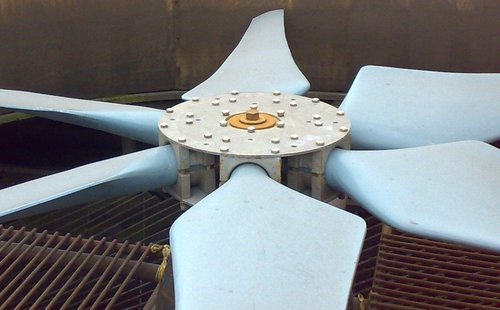Energy Efficient Cooling Towers:
Energy Efficient Cooling towers fan are provide the cooling for air-conditioning, manufacturing processes, or power generation by utilizing the evaporation of water to transfer heat from the process or building to the atmosphere. Therefore, Energy efficient cooling towers fan consume significant amounts of water and the cooling system is often a building’s largest energy consumer during the cooling season. The following best practices and suggestions will help ensure that you are maximizing energy efficiency in your cooling system.
Image:

Process:
Energy Efficient Cooling towers fans are a major component in commercial and institutional facility comfort and process cooling systems. Their operation is straightforward. They are expected to operate efficiently and reliably, even though they are installed in an outdoor environment that subjects them to temperature extremes, wind, rain, dust, dirt, and organic contamination. They also affect facility energy use. A poorly operating cooling tower reduces chiller efficiency and eventually leads to system failures.
In spite of their impact on facilities, cooling towers are among the most neglected equipment in many facilities. Maintenance and engineering managers might understand a cooling tower’s role, but they might not fully realize the importance of keeping them operating at peak performance levels.
Lacking that understanding, managers might not know the steps they can take to improve the performance of cooling towers while extending the tower’s service life.
While the type of tower installed and its operating environment determine the issues managers must address to keep the tower operating efficiently, managers also need to consider a number of common issues most tower operations face, including motor management, contamination and water levels.
Benefits:
- Mitigate climate change
- Reduce localized air and noise pollution
- Reduce fuel usage and the environmental harm caused by fossil fuel extraction
Targets:
Universal access to modern cooking facilities, universal energy access and universal electrification access has the benefit of $9, $7 and $5, respectively, for every dollar spent. These are all valuable targets but the universality of the target implies increasing costs at the limit and thus suggests a more restrained target would result in greater benefit-cost ratios.
Double the rate of energy efficiency improvement globally which will return $3 for every dollar spent. Improvements in efficiency reduced energy prices through lesser demand ease infrastructure needs and frequency of temporary power shortfalls as well as improve industrial competitiveness.

